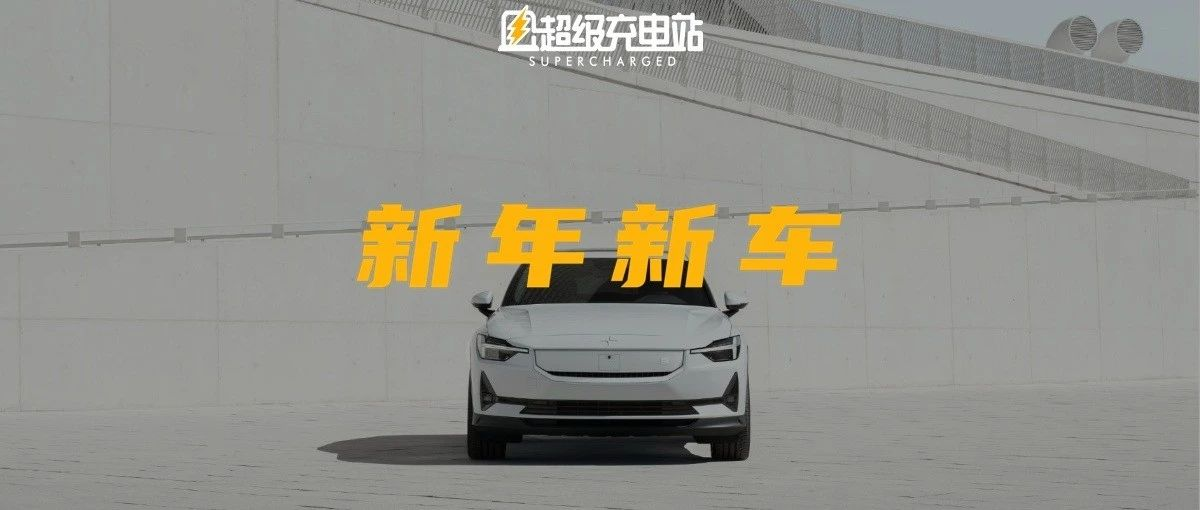Author: Chang Yan
Even though everyone’s attention had already turned away from work during the Spring Festival holiday, we can still feel that Polestar has been the most hardworking brand in terms of brand building after entering 2023.
Whether it is expanding its own design tone on more peripheral elements, or working hard to create a higher sense of existence for the Polestar brand, one can feel it from the continuous marketing offensives launched by Polestar.

However, the improvement in the brand foundation also highlights an awkward point: Polestar needs a “new” car.
Although the Polestar 3 is good, it cannot quench the thirst nearby. In the recent period, the only model that Polestar can rely on to achieve sales in China is the Polestar 2. With the clear situation of the Polestar 3-6, you can feel more about the embarrassment of the current model 2 in the Chinese market.

Strictly speaking, the Polestar 3-6 are the models that fully reflect the Polestar design style and complete intelligent automotive product concept, and the Polestar 3, 5, and 6 are relatively positioned as high-end. In this case, the Polestar 2 will still bear the heavy responsibility of supporting the sales volume of the Polestar mainstream market segment, standing side by side with the Polestar 4.
In summary, the Polestar 2 not only needs to catch up with its brothers, but also needs to catch up with the overall market.
However, Polestar’s response is unprecedentedly fast. Just over 3 years after its launch, the new version of the Polestar 2 has arrived.
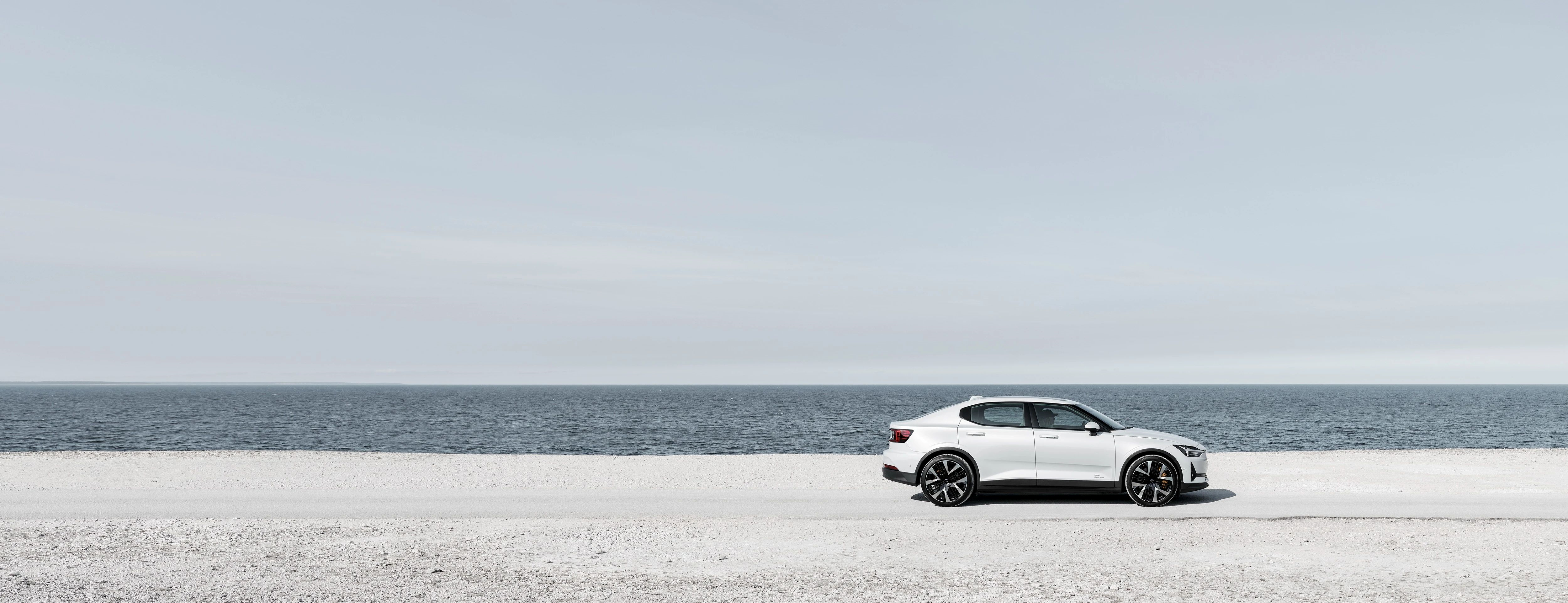
Two changes and increased technology
With the designer serving as the CEO, we don’t have to worry too much about the obvious “facelift” problem that some other brands encounter after mid-term updates, as far as the new version of the Polestar 2 is concerned.
Strictly speaking, only two major external design adjustments were made to the Polestar 2 in the new version.One, the front face of the Polestar 2 has been replaced with the same SmartZone as the Polestar 3 and subsequent models, which not only gives the car a highly electric appearance, but also has a higher level of sensor layout for advanced driving systems.

This allows the Polestar 2 to support more powerful active driving and safety functions. The company has stated that updates have been made to configurations including the front camera and mid-to-long range radar.
However, since the laser radar has not been updated, its overall driving ability should not match that of the Polestar 3’s overall solution.
Two, the Polestar 2 has a new wheel hub design, just like the 2023 European version of the Polestar 2, which has a more futuristic feel and helps to further reduce air resistance.
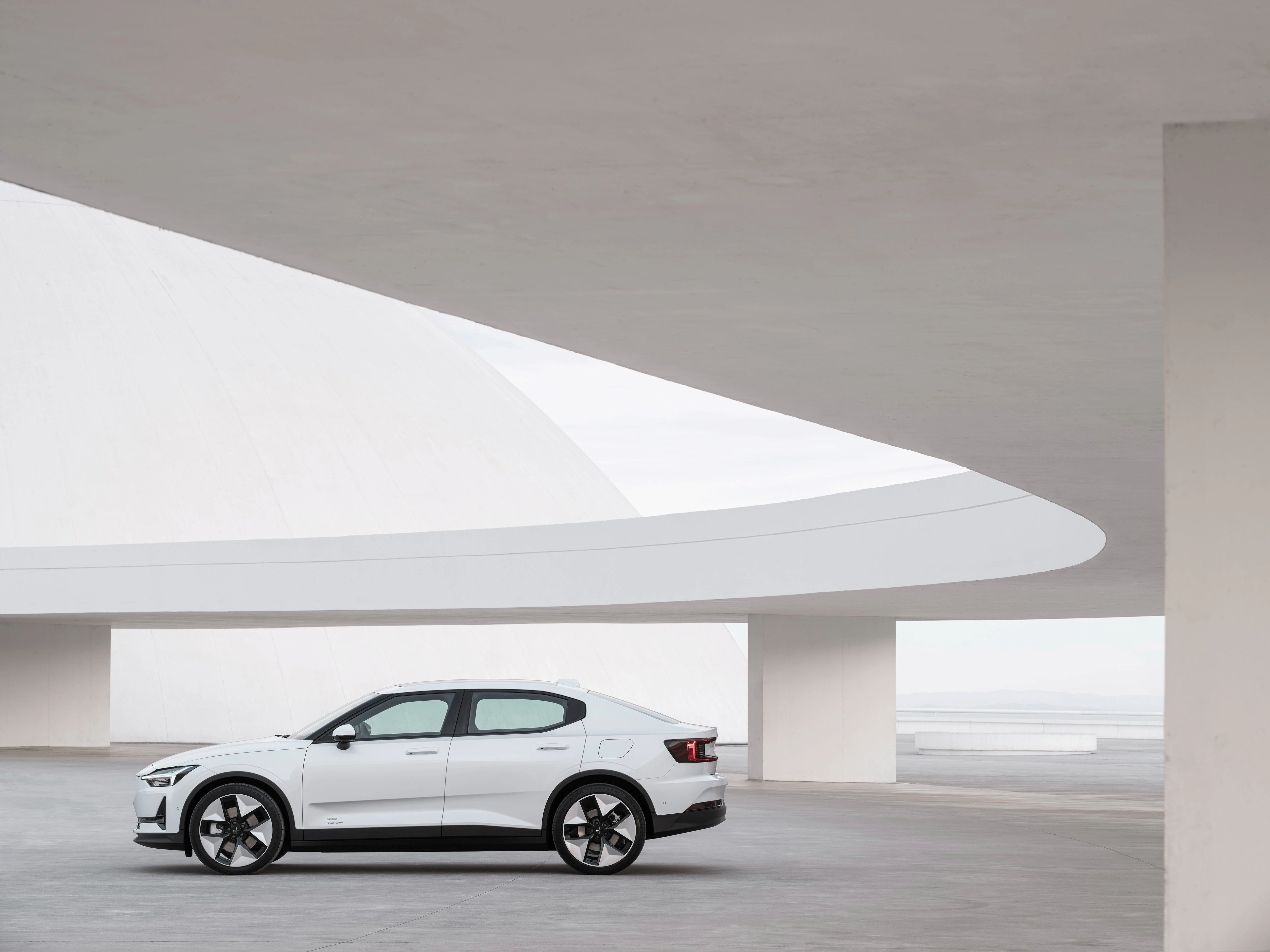
Especially with the updated 20-inch forged alloy wheels in the Performance Pack, the Polestar 2 now has a highly consistent sporty style with the Polestar 3.

Rear-wheel drive: A name for sportiness
When talking about the updated Polestar 2, Polestar CEO Thomas Ingenlath said, “The Polestar 2 is not undergoing surface cosmetic surgery that destroys its original design integrity, but instead is undergoing powerful hardware upgrades.“
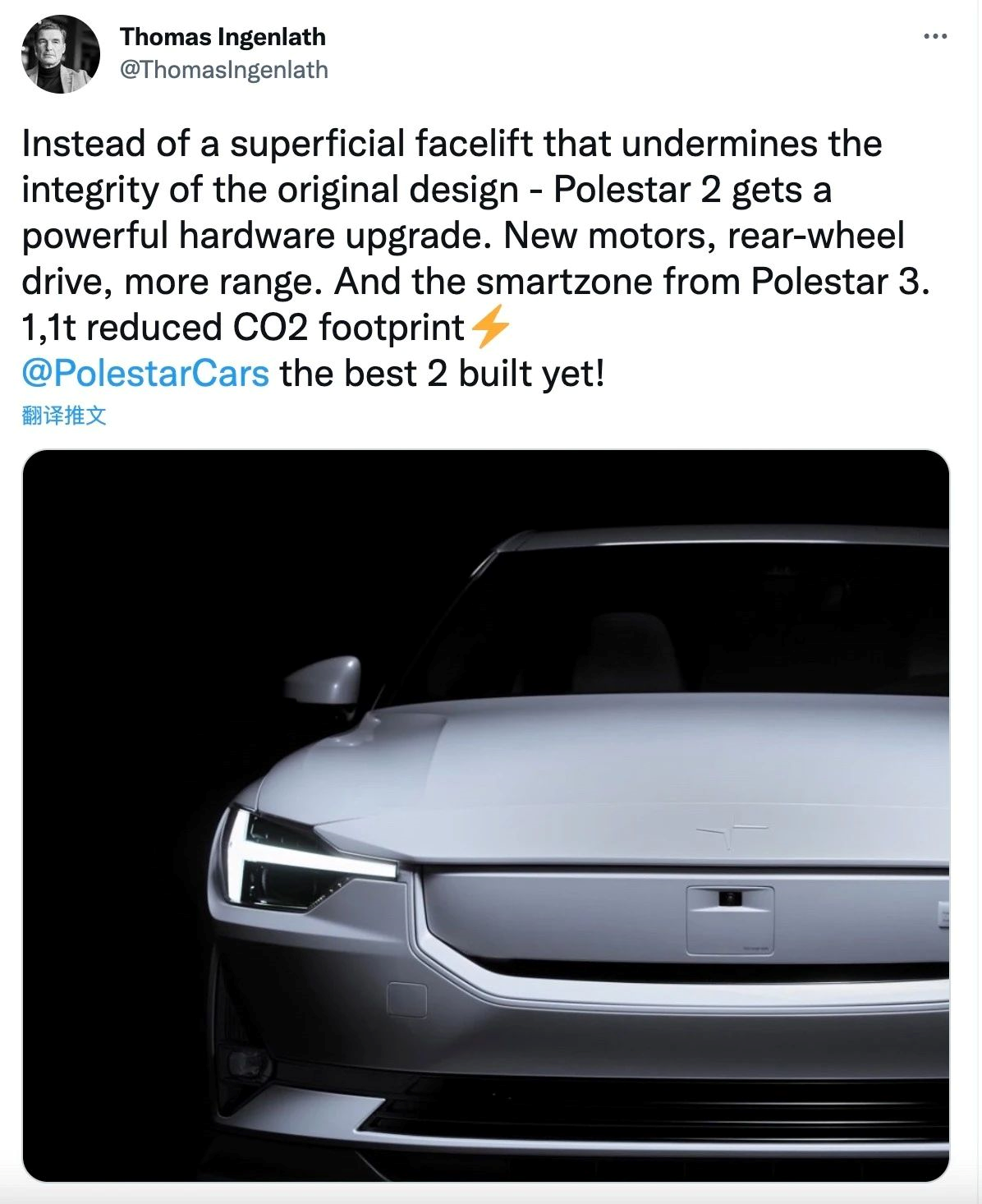
Most of these upgrades are reflected in the power system.
When the Polestar 2 was introduced as a single-motor version, there was some confusion as to why such a sports-focused model with fastback crossover design would use front-wheel drive, especially given the flexibility of electric vehicles in choosing their driving forms compared to traditional vehicles.Although Polestar did not give any explanation, they have undoubtedly come up with a more correct solution in this restyling.
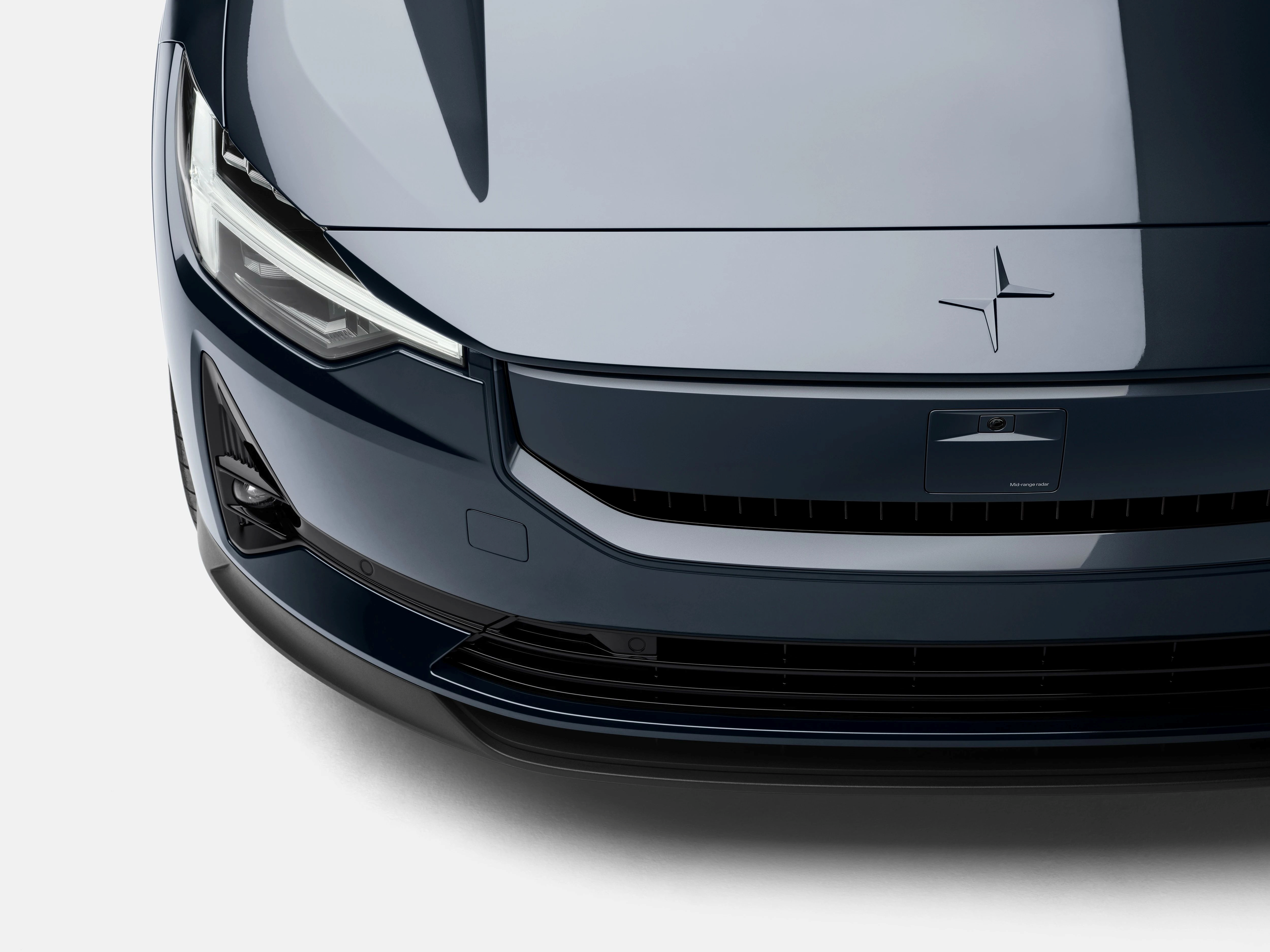
After restyling, the single-motor model of Polestar 2 changed to rear-wheel drive. More importantly, the power drive component has been deeply upgraded. Polestar has developed a new permanent magnet motor and used a popular silicon carbide inverter. Compared to the 170kW of the old motor, the new motor has astonishingly increased to 220kW, proving that Polestar’s previous electric motor development plan is not just empty talk. The maximum torque has also directly increased from 330Nm to 490Nm.

This reduces the 0-100 km/h sprint time of the single-motor version of Polestar 2 by up to 1.2 seconds, to 6.2 seconds. The dual-motor version now also reflects more of a rear-wheel drive style. In order to balance performance and endurance, the dual-motor system adopts a rear permanent magnet + front asynchronous scheme. This scheme is consistent with the logic of the high-performance version of Model 3. When cruising at high speed, the resistance generated by the front axle will be lower because the front motor can now be completely disengaged when not needed. When the driver needs more power, the front motor will seamlessly reconnect immediately.

“The conversion of the single-motor model from front-wheel drive to rear-wheel drive, and the recalibration of the torque ratio of the dual-motor model to increase the feel of rear-wheel drive, takes the driving experience of Polestar 2 to a new level,” said Joakim Rydholm, Polestar’s head of chassis development. “The updated Polestar 2 is a more playful and agile car, retaining its compactness and complete sense of control, while becoming more mature and adding comfort.”## Great Improvement in Endurance
Users who were previously indecisive about the endurance performance of Model 2 can now put their struggles aside.
The electric drive system and control logic mentioned earlier have brought not only higher power output, but also more efficient power transmission. Taking the long-endurance version with dual motors as an example, under the best working conditions, the WLTP endurance can reach up to 592km, an increase of 105km in one fell swoop compared with the previous result.
The standard endurance model has also broken the 500km barrier and reached 518km, whereas the longest-duration long-endurance single-motor version has reached 635km. Moreover, both of these numbers are relatively solid according to the WLTP standard.

Of course, the endurance is also supported by the larger battery. The battery capacity of the long-endurance version has been further increased to 82kWh, which is produced by CATL, consisting of 27 modules, while the standard endurance version still has a capacity of 69kWh, produced by LG Chem with 24 modules.
The charging performance of both versions has also been upgraded due to improvements in the internal wiring and chemical substances of the battery pack. The maximum charging power of the long-endurance version is 205kW, while that of the standard endurance version is 135kW. The charging power of the long-endurance version is sufficient to fully charge in most public charging services outside of brand-owned private charging networks.
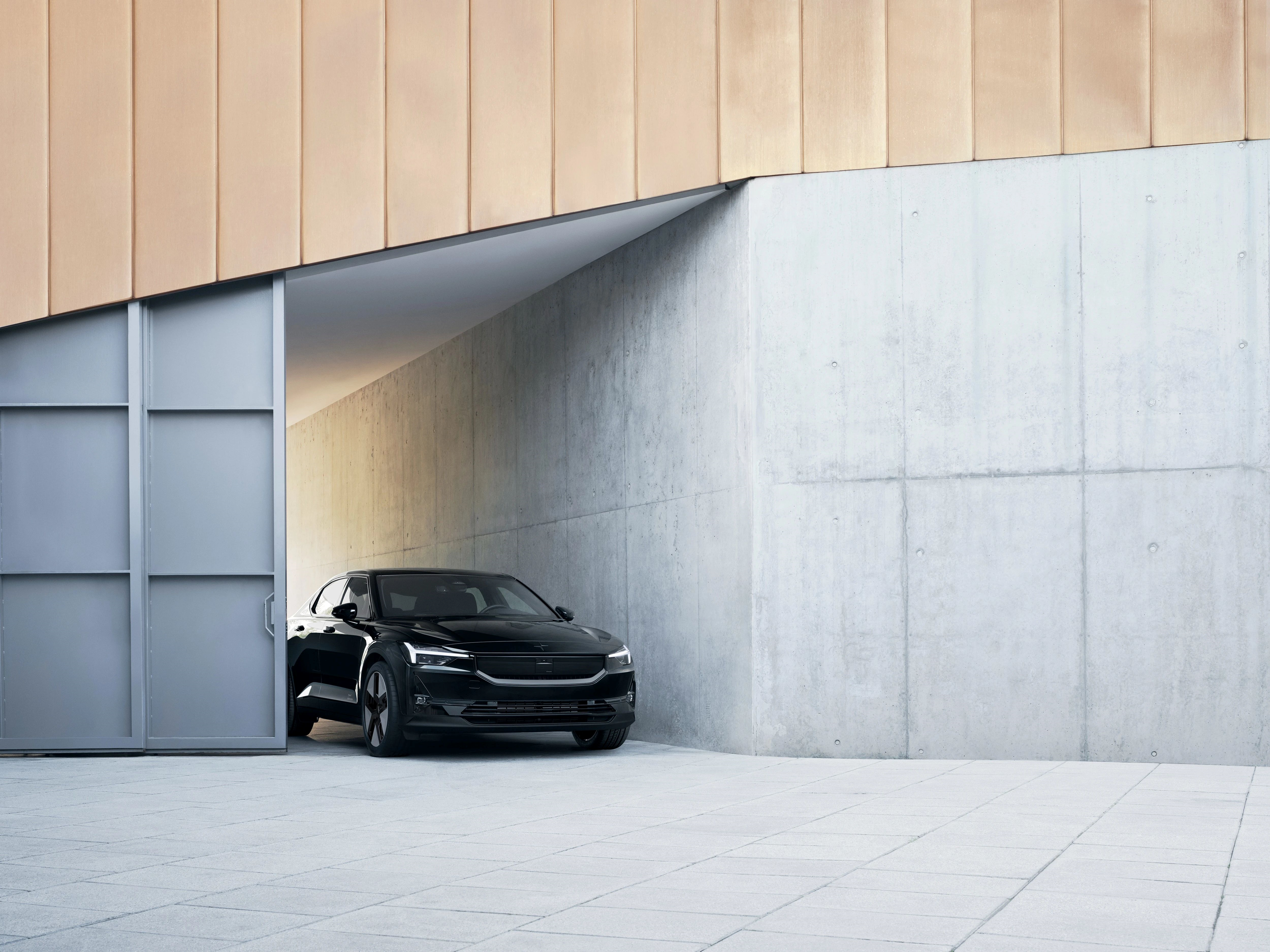
In addition to adding more, better features without raising prices is a common option for current electric vehicle restyling. The upgraded Model 2 now has a standard driver attention detection system, turn blind spot monitoring, traffic intersection alert, rear-end collision alert, and 360-degree surround view and automatic dimming rearview mirror.
However, it is regrettable that there are not many changes to the interior, one of the most important concerns of Chinese users, such as the excessively wide front console and the lack of smoothness in the information system. There are no corresponding hardware upgrades, but wireless charging has become a standard feature in all models.
 Although called the 2024 model, the updated Polestar 2 can already be ordered in the European market area on the official Polestar website, with deliveries expected to begin in Q3 2023.
Although called the 2024 model, the updated Polestar 2 can already be ordered in the European market area on the official Polestar website, with deliveries expected to begin in Q3 2023.
The pricing structure has also been released: 50190 Euro for the Standard Range Single Motor, 53890 Euro for the Long Range Single Motor, 58190 Euro for the Long Range Dual Motor, and 64690 Euro for the Performance edition.
The update to the Polestar 2 represents significant progress with major advancements in performance specifications. However, in the Chinese market, Polestar needs to carefully consider the issues of product delivery speed and pricing strategy. The Polestar 2 seems to fall into the curse of always being discounted during the release of a new competitor.
Lastly, for some reason, I have been extremely opposed to European cars that are only extended versions of their previous models, but this time I hope that Polestar can release a 2L version.

This article is a translation by ChatGPT of a Chinese report from 42HOW. If you have any questions about it, please email bd@42how.com.
